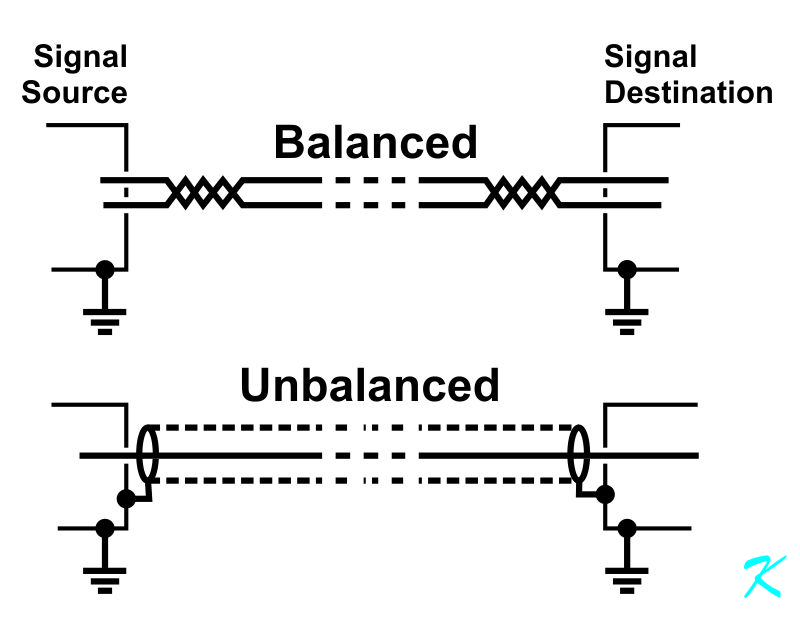
Commonly,
balanced wiring systems are like:
- RS485 data transfer and networking systems
- Industrial processing control systems
- Computer networking systems
- Professional audio sound systems
- Fire alarm Initiating Device Circuits (IDC), Notification Appliance Circuits (NAC), Signaling Line Circuits (SLC)
- Video - newer high-definition standards
Commonly,
unbalanced wiring systems are like:
- Pro audio and sound systems
- Consumer audio and video systems
- Video - older NTSC standards
Independent or Shared
The difference between a balanced or an unbalanced communications circuit is really shown as the difference between independent or ground-shared conductors.
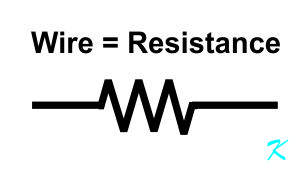
Wire resistance is the issue. Even though the resistance is often too low to be detected by a hand-held ohmmeter, all wires have resistance.
Ground Loop Effect
The Ground Loop Effect is where the current on a building's grounding system injects a stray voltage into the signal-carrying wires between electronic equipment.
In essence, by connecting to the resistance in the grounding system, the ground injects an unwanted signal onto the resistance of the communication lines. This injected signal may not be noticeable, the injected signal may only be merely annoying, or it may totally corrupt the intended signal.
Theory: Series Wired
Whether a circuit is balanced or un-balanced, electricity travels in a complete circuit. The circuit is a circle.
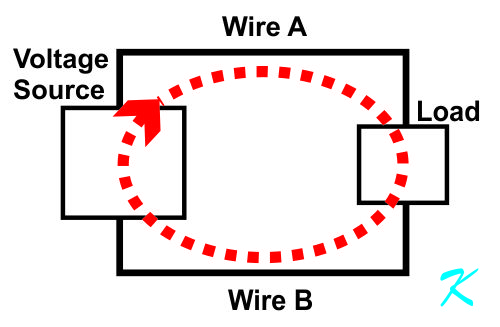
In essence, to continue flowing, electricity travels in one direction out of the voltage source, through a conductor (Wire A), through the load, returns to the source through a second conductor (Wire B), and then into the source. Then the electricity travels through the voltage source so it can start over. If the electricity flow stops anywhere in the circle, including stopping inside the source, the electricity flow has to stop everywhere in the circle.
It's important to note that for electricity to flow in the first place, there has to be a "Force" that pushes and pulls the electricity. Whether you consider the electricity flow to be the movement of electrons, or the movement of positive or negative charges, it has to be an electrically-charged force, or "Electromotive Force" that causes the electricity to flow.
Circuit
When looking at a wire, the wire in the circuit is not a direct short; the wire has at least a little resistance. The load, by the way, can also be considered to be a resistance.
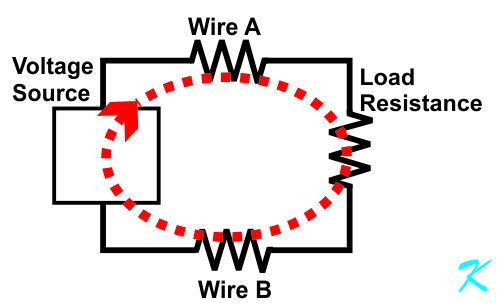
Redrawing a schematic makes the circuit easier to understand.
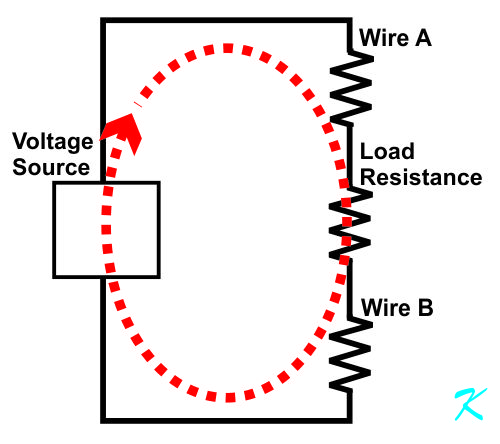
This is the same circuit, just redrawn. The voltage on the voltage source will always equal the voltage on the total resistance of the circuit, including the wires.
Balanced Electrical Circuit
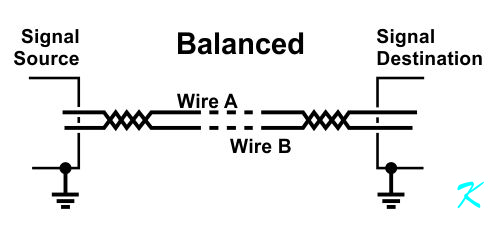
A balanced electrical circuit is not affected very much by outside voltages; the wires are independent. It's not a perfect independence, but the building's ground system does not add shared connections to a balanced circuit.
The boxes for the signal source and the signal destination are connected directly to the building's ground system, but the wires of the balanced system (Wires A and B) are connected to the electronics inside the boxes.
(Connectors aren't being included in the description.)
Unbalanced Circuit
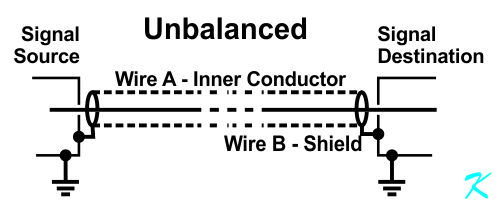
An unbalanced electrical circuit is affected by outside voltages; Wire B is connected to ground at both ends and shares current with the building's ground system.
Building's Ground
The building's ground system, from the point of view of fire safety and electrocution safety, is an electrical current-drain system. All electrical equipment, whether the equipment is an air handler or air conditioner, elevator motor, refrigerator, lighting system, audio and sound system, etc. is required by law to be connected to the building's ground system. The connections mean that even small leakages of current will be passed through the building's ground system to the copper-clad stake driven into the earth.

For all practical purposes, unless the building is very small, some electrical current will always be passing through the building's ground system: from electrical equipment, to the copper stake driven into the earth. The current through the resistance produces stray voltages, which can be measured.
Electrical ground wires and electrical conduit are part of the building's ground system. They are usually connected into the building's ground system in different ways, but they still have to be considered as part the grounding system for the building.
The Building's Ground is an Electrical Network
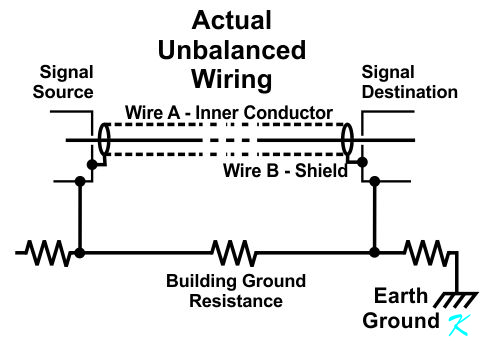
The shield of an unbalanced system is connected to the building's grounding system. Whatever current is passing through the building's ground system will be shared with the shield (Resistance in Wire B).
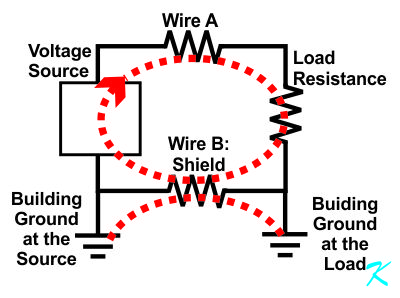
The unintended consequence to an unbalanced circuit is that the resistance of the shield, Wire B, becomes a second voltage source. Wire B is in series with the intended voltage source and also the load resistance. The unintended stray voltage introduced into the circuit by the resistance of Wire B will be added to the intended voltage from the source. Because it's a series circuit, both voltages will be felt by the load.
Usable Distance with Unbalanced Wiring
Short distances, like the distances in residential entertainment centers, are usually not affected much by stray voltages on the grounding network. Larger distances, like between equipment in various parts of commercial buildings will often produce offensive or corrupting hum, hiss, or other effects.
I've measured as much as 2.0 volts peak-to-peak between two outlets, 100 feet apart in a commercial building. I've also had to fix an audio distribution network where two different audio signals were mixing together in the grounding system.
Independent or Shared

Both a balanced system and an unbalanced system carry signals from the source to the destination.
An unbalanced system shares current, and therefore stray voltage, with the building's ground system. A balanced system, though, because both wires are independent of the building's ground system, does not pick up the stray voltages.
Douglas Krantz










